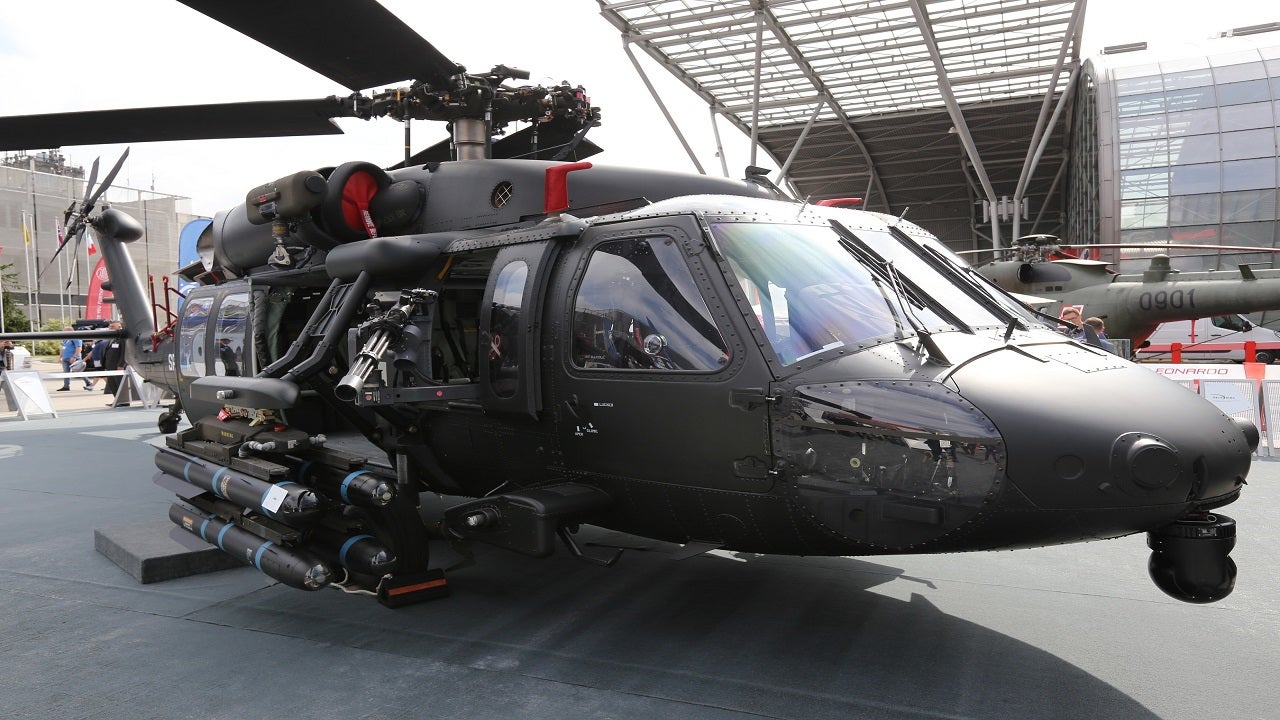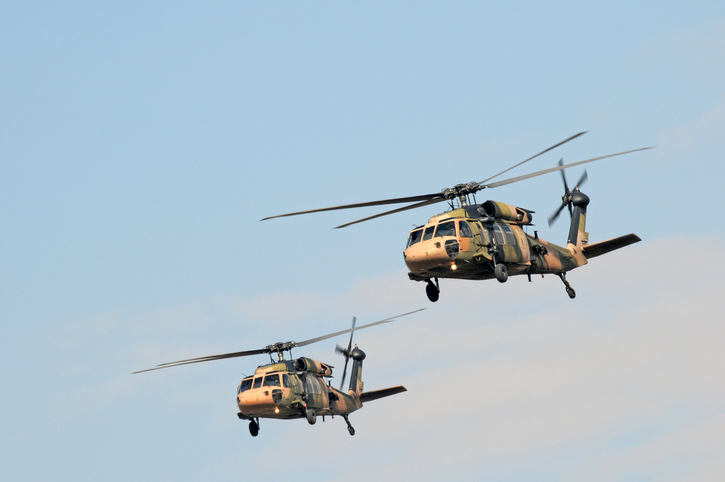Sikorsky S 70: Reinventing Tactical Procedures with Cutting-Edge Innovation
Wiki Article
High-Performance Multi-Role Rotorcraft Featuring Advanced Cockpit Technologies and Integrated Sensing Unit Systems
The realm of rotorcraft innovation has actually seen significant innovations in current times, especially in the world of high-performance multi-role rotorcraft geared up with sophisticated cockpit modern technologies and seamlessly integrated sensing unit systems. These innovations have not just boosted the functional abilities of rotorcraft however have also significantly impacted modern-day air travel operations on various fronts. From boosted goal adaptability to improved operational efficiency, the merging of advanced cockpit innovations and incorporated sensing unit systems has introduced a new era of possibilities for rotorcraft applications. In the adhering to discussion, we will certainly check out the advancement of rotorcraft modern technology, dig into the realm of advanced cockpit innovations, and examine the effects of integrated sensing unit systems on the operational versatility and effectiveness of modern rotorcraft.Development of Rotorcraft Technology
The advancement of rotorcraft innovation has actually been noted by substantial improvements in aerodynamics, products, and propulsion systems, forming the abilities and efficiency of modern-day rotorcraft. Wind resistant renovations have actually boosted the efficiency and ability to move of rotorcraft, enabling raised speed, agility, and stability during trip (sikorsky s 70). Developments in materials, such as using composite products and progressed alloys, have actually brought about lighter yet more powerful rotorcraft frameworks, improving overall performance and sturdiness. In addition, innovations in propulsion systems, including more powerful engines and innovative propulsion innovations, have actually allowed rotorcraft to attain greater altitudes, faster speeds, and greater payloads.These improvements have not just changed the abilities of rotorcraft however have actually also increased their applications across various sectors, consisting of armed forces, commercial, and emergency services. The continual development of rotorcraft innovation remains to drive technology in the area, pushing the borders of what is possible and shaping the future of upright trip.
Advanced Cockpit Innovations
Structure upon the foundational developments in the rules of aerodynamics, products, and propulsion systems, the realm of rotorcraft modern technology now shifts emphasis towards introducing Advanced Cockpit Innovations. The integration of cutting-edge modern technologies within the cabin environment plays an essential duty in boosting the operational capacities, safety and security, and effectiveness of modern rotorcraft. sikorsky s 70. Advanced Cabin Innovations incorporate a broad array of attributes made to provide pilots with boosted situational recognition, structured information monitoring, and intuitive control user interfacesAmong the vital advancements in cabin design is the implementation of glass cockpits, which replace standard analog evaluates with high-resolution displays. These electronic systems offer adjustable layouts, real-time information integration, and enhanced readability, allowing pilots to gain access to vital information at a glance. Advanced avionics systems, such as fly-by-wire controls and increased reality display screens, are revolutionizing just how pilots communicate with the aircraft, allowing for specific control and improved decision-making capabilities.


Including advanced cabin advancements not only enhances pilot performance however likewise contributes to total goal efficiency and security in complicated operational settings. By leveraging modern modern technologies within the cockpit, rotorcraft makers are establishing brand-new requirements for operational excellence and objective success.
Integrated Sensor Solutions
With the evolution of rotorcraft innovation, the assimilation of advanced Integrated Sensing unit Equipment has come to be extremely important in enhancing functional effectiveness and security. These Integrated Sensor Solutions incorporate a broad array of innovations that offer crucial information for various functions such as navigation, monitoring, targeting, and environmental tracking. By flawlessly integrating sensing units like radars, cams, lidar, and infrared systems right into rotorcraft, operators can take advantage of enhanced situational recognition, enhanced mission abilities, and decreased pilot workload.One trick advantage of Integrated Sensor Equipments is their capacity to collect real-time data and give workable understandings to pilots and mission drivers. As an example, progressed radar systems can spot and track targets over long distances, permitting very early danger detection and efficient reaction preparation. Furthermore, incorporating infrared and electro-optical electronic cameras enables rotorcraft to carry out reconnaissance and monitoring goals with precision and precision.
Basically, the combination of sophisticated sensing unit innovations right into rotorcraft not just improves operational efficiency but additionally adds considerably to total objective success and team safety and security. As rotorcraft continue to advance, the function of Integrated Sensing unit Systems will undoubtedly continue to be at the forefront of technology in the aerospace industry.
Functional Flexibility and Performance
Enhancing functional flexibility and effectiveness in rotorcraft is an all-natural development from the integration of sophisticated Integrated Sensing unit Systems. By leveraging the information and understandings given by these innovative sensor systems, rotorcraft can optimize their performance across numerous missions and settings.Operational flexibility encompasses the ability of rotorcraft to adapt to different functions and circumstances efficiently. With sophisticated cockpit modern technologies and incorporated sensor systems, rotorcraft can perfectly transition in between jobs such as search and rescue, medical evacuation, surveillance, and more. This adaptability boosts the rotorcraft's capacity to satisfy diverse functional needs without needing substantial reconfiguration.
Performance in rotorcraft procedures is critical for taking full advantage of goal useful site performance and source use. Integrated sensor systems play a critical role in enhancing operational effectiveness by offering real-time information on weather, terrain mapping, target tracking, and much more. This data allows pilots to make informed decisions promptly, enhance trip paths, preserve gas, and boost total goal productivity.
Influence on Modern Aviation Operations

Furthermore, the integration of innovative sensing units promotes enhanced objective preparation and implementation, enabling rotorcraft to execute a variety of jobs with improved accuracy. From search and rescue operations to aerial firefighting and law enforcement goals, the abilities of contemporary rotorcraft geared up with advanced cockpit modern technologies and incorporated sensor systems are exceptional.
Additionally, the impact of these improvements expands beyond operational performance to cost-effectiveness and sustainability. By maximizing trip courses, fuel usage, and upkeep schedules, high-performance rotorcraft geared up with sophisticated cockpit technologies and sensors add to decreasing functional expenses and ecological impact, making them important assets in contemporary air travel procedures.
Conclusion
In verdict, the high-performance multi-role rotorcraft with advanced cockpit technologies and integrated sensor systems stands for a considerable development in aviation modern technology. These technologies boost operational convenience and efficiency, eventually impacting modern air travel procedures in a positive means. The assimilation of these sophisticated innovations enables boosted capabilities and efficiency in numerous goal situations, showcasing the home continued innovation of rotorcraft innovation in the aviation sector.The realm of rotorcraft innovation has actually seen remarkable advancements in current times, particularly in the realm of high-performance multi-role rotorcraft best site geared up with advanced cabin technologies and seamlessly integrated sensor systems. From boosted objective adaptability to improved functional efficiency, the merging of innovative cockpit modern technologies and integrated sensing unit systems has actually ushered in a new era of opportunities for rotorcraft applications. In the complying with discussion, we will certainly explore the advancement of rotorcraft innovation, dive into the world of sophisticated cockpit innovations, and examine the implications of incorporated sensing unit systems on the operational convenience and performance of contemporary rotorcraft.

Report this wiki page